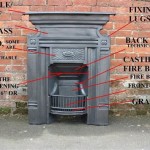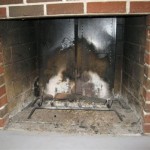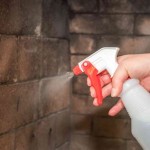Propane Fireplace Stove Reviews: A Comprehensive Guide
Propane fireplace stoves offer a practical and aesthetically pleasing alternative to traditional wood-burning fireplaces. They provide the ambiance of a fire without the labor-intensive process of gathering wood and managing ashes. This article will explore the various aspects of propane fireplace stoves, examining key features, performance factors, and popular models currently available on the market. Understanding these elements is crucial for making an informed decision when selecting the right propane fireplace stove for individual heating needs and preferences.
Propane fireplace stoves effectively combine the visual appeal of a fireplace with the convenience of propane fuel. Unlike wood-burning stoves, they require no wood storage, produce minimal ash, and offer precise temperature control. The flames are typically realistic and can be adjusted for intensity. Furthermore, installation is often simpler than installing a traditional fireplace, making them an attractive option for homeowners seeking a supplemental heating source or an aesthetic upgrade.
The selection of a propane fireplace stove involves careful consideration of factors such as heating capacity, venting requirements, aesthetic design, and safety features. Evaluating these characteristics ensures that the chosen stove aligns with the intended application and contributes positively to the overall comfort and atmosphere of the living space. Regular maintenance is also necessary to guarantee optimal performance and longevity of the appliance.
Key Considerations Before Purchasing a Propane Fireplace Stove
Prior to purchasing a propane fireplace stove, several key factors should be carefully evaluated. These factors include the physical size of the space being heated, desired heating output, venting options, and individual aesthetic preferences. Neglecting any of these aspects can lead to dissatisfaction with the purchase and potentially impact the stove’s overall performance and suitability.
Heating Capacity: The British Thermal Unit (BTU) rating of a propane fireplace stove indicates its heating capacity. It is critical to select a stove with a BTU rating that corresponds to the size of the area to be heated. A stove with insufficient BTU output will struggle to warm the space effectively, while a unit with an excessively high BTU rating may overheat the room and lead to inefficient energy consumption. Consulting BTU charts and considering the insulation levels of the room are helpful in determining the appropriate heating capacity.
Venting Options: Propane fireplace stoves require proper venting to safely exhaust combustion byproducts. There are two primary venting options: direct vent and vent-free. Direct vent stoves draw air from outside the home for combustion and vent exhaust gases directly outdoors, providing a sealed combustion system. Vent-free stoves, on the other hand, draw air from within the room and release combustion gases back into the room. Vent-free models typically have safety features such as oxygen depletion sensors (ODS), but local building codes may restrict or prohibit their use due to potential indoor air quality concerns. Direct vent systems are generally considered safer and more efficient.
Aesthetic Design: Propane fireplace stoves are available in a wide variety of styles, finishes, and designs to complement different interior décor schemes. From traditional cast iron stoves to contemporary linear models, there are options to suit diverse aesthetic preferences. The choice of materials, such as cast iron, steel, or stone, also influences the overall appearance and durability of the stove. Considering the existing décor and the desired aesthetic impact is crucial in selecting a propane fireplace stove that enhances the visual appeal of the living space.
Safety Features: Safety is paramount when operating any fuel-burning appliance. Propane fireplace stoves should have multiple safety features, including a flame failure device that automatically shuts off the gas supply if the flame is extinguished. Overheat protection and carbon monoxide detectors are also important safety considerations. Regular inspection and maintenance of safety features are essential to ensure the safe operation of the stove.
Popular Propane Fireplace Stove Models and Their Features
The market offers a diverse range of propane fireplace stove models, each with unique features and benefits. Examining several popular models provides a better understanding of the available options and helps in identifying the most suitable stove for individual needs. These models vary in terms of heating capacity, venting configuration, design aesthetics, and technological advancements.
Empire Comfort Systems DV25SG Direct Vent Stove: The Empire Comfort Systems DV25SG is a direct vent propane stove known for its efficient heating performance and traditional design. Its features typically include a realistic log set, adjustable flame height, and a built-in thermostat for precise temperature control. The direct vent system ensures safe and efficient combustion, making it a popular choice for homeowners seeking a reliable and aesthetically pleasing heating solution. The BTU range is suitable for small to medium-sized rooms, offering both warmth and ambiance.
Napoleon GDS20 Direct Vent Gas Stove: The Napoleon GDS20 is another direct vent model offering a blend of traditional styling and modern functionality. It features a cast iron design, realistic log set, and optional blower for enhanced heat distribution. The GDS20 is equipped with a safety shut-off system and adjustable flame control, providing both safety and comfort. Its compact size makes it suitable for smaller spaces while still delivering ample heat output. The decorative options allow homeowners to customize the stove to match their décor.
ProCom Heating Vent-Free Stove: ProCom offers a range of vent-free propane stoves designed for ease of installation and operation. These stoves typically include an oxygen depletion sensor (ODS) for safety and automatic shut-off in the event of low oxygen levels. While vent-free models offer the advantage of requiring no venting, it is crucial to ensure that local building codes permit their use and to maintain proper ventilation in the room. ProCom stoves are available in various sizes and styles to accommodate different heating needs and aesthetic preferences.
Regency Hampton HI300E Gas Stove: The Regency Hampton HI300E gas stove represents a higher-end option with advanced features and superior construction. It boasts a large viewing area, realistic flame pattern, and optional remote control for convenient operation. The HI300E offers both radiant and convection heating, providing efficient heat distribution throughout the room. Its durable construction and stylish design make it a premium choice for homeowners seeking both performance and aesthetics. The enhanced safety features and precise temperature control contribute to its overall appeal.
These are but a few examples of the many propane fireplace stoves available. Each model has its strengths and weaknesses, so careful research and comparison are crucial before making a purchase. Consulting with a qualified HVAC professional can also provide valuable guidance in selecting the right stove for specific heating needs and installation requirements.
Installation, Maintenance, and Safety Best Practices
Proper installation, regular maintenance, and adherence to safety best practices are crucial for ensuring the safe and efficient operation of a propane fireplace stove. Incorrect installation can lead to serious safety hazards, while neglecting maintenance can reduce the stove's performance and lifespan. Following these guidelines guarantees a reliable and safe heating solution.
Professional Installation: It is highly recommended to have a qualified HVAC technician install a propane fireplace stove. Professional installation ensures that the stove is properly connected to the propane gas line, vented correctly, and meets all local building codes. Attempting to install the stove without proper training and experience can result in gas leaks, carbon monoxide poisoning, or other safety hazards.
Regular Maintenance: Routine maintenance is essential for maintaining the stove's efficiency and preventing potential problems. This includes cleaning the burner assembly, inspecting the venting system, and checking for gas leaks. The frequency of maintenance depends on the usage of the stove but should be performed at least annually. A qualified technician should conduct more thorough inspections and repairs as needed.
Safety Checks: Regular safety checks are crucial for identifying potential hazards and ensuring the safe operation of the stove. This includes verifying the proper function of the flame failure device, testing the carbon monoxide detector, and inspecting the gas line for leaks. Any signs of damage or malfunction should be addressed immediately by a qualified technician.
Proper Ventilation: Adequate ventilation is essential, particularly for vent-free propane stoves. Ensure that the room is properly ventilated to prevent the buildup of carbon monoxide and other combustion byproducts. Never block or obstruct air vents, and consider using an air purifier to improve indoor air quality.
Carbon Monoxide Detectors: Install carbon monoxide detectors on every level of the home, especially near sleeping areas. Test the detectors regularly to ensure that they are functioning properly. Carbon monoxide is a colorless and odorless gas that can be deadly, so it is crucial to have working detectors to provide early warning of a potential leak.
Gas Leak Detection: If a gas leak is suspected, immediately evacuate the area and contact the local gas company or fire department. Do not use any electrical devices or open flames, as these can ignite the gas and cause an explosion. Follow the instructions of the gas company or fire department to ensure the safety of the occupants and the property.
These points highlight the importance of responsible ownership and operation of propane fireplace stoves. By adhering to these guidelines, homeowners can enjoy the benefits of a propane fireplace stove while minimizing the risks associated with its use. Prioritizing safety and ensuring proper maintenance are essential for a long-lasting and reliable heating solution.

Reviews For Procom Ventless Dual Fuel Stove 25 000 Btu Pg 1 The Home Depot

4 Reasons To Upgrade Your Wood Stove A Propane

Heat Up Your Space Best Gas Fireplace Stoves Reviewed For 2024

Reviews For Pleasant Hearth 32 000 Btu 46 In Full Size Ventless Propane Gas Fireplace Pg 1 The Home Depot

Reviews For Pleasant Hearth 27 500 Btu 42 In Convertible Ventless Propane Gas Fireplace Heritage Pg 1 The Home Depot

Propane Fireplaces Gas Stoves Id Mt Wy Fall River

Reviews For Duluth Forge Dual Fuel Ventless Gas Fireplace 26 000 Btu Remote Control Chestnut Oak Finish Pg 1 The Home Depot

Allen Roth 1100 Sq Ft Dual Burner Vent Free Freestanding Natural And Liquid Propane Gas Stove In The Stoves Department At Com

Vantage Bayview Freestanding Direct Vent Gas Or Propane Fireplace Fireplaces By Cameron

Enviro Westport Steel Gas Burning Stove Ottawa Fireplace
Related Posts








